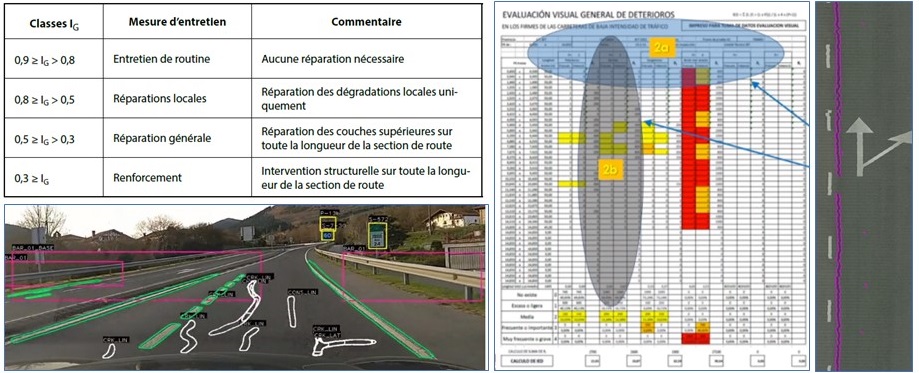What do have in common the Center de recherches routières (CRR) in Belgium, the ATC Low Intensity Roads committee in Spain and the evaluation entities of the highway concession companies?
All these entities help to better understand the condition of the roads and, for this, they have developed procedures that allow pavement evaluations to be applied through visual inspection. These procedures are based on the premise that the people who will carry out the evaluations may have very heterogeneous criteria when making the evaluation, for which they describe in great detail how to evaluate and the results to be obtained.
In all the procedures there are especially relevant parameters: the types of damage, the length of the lane with defects or their degree of severity. Once the parameters have been collected, rating indexes are calculated that make it possible to obtain the classification ratio for each section of the road. The Global Index (IG) in Belgium or the Road Condition Index (IEC) in Spain are examples of this.
The entities that apply this type of procedure may have very different objectives: in the case of evaluators of concessionary companies, the objective is to determine if penalties should be applied to the contracts, for non-compliance with the required quality levels; in other cases the objective may be to determine which are the most deteriorated sections of the road or to analyse the cost of repair.
Our Autonomous Road Inspector already implements several of these indexes automatically. Only by driving on the road in the vehicle, the classification of the road can be obtained, avoiding heterogeneous evaluations by humans and applying the criteria as designed in the corresponding technical committees.
Do you know of another evaluation index? Do you want to apply your own road evaluation criteria? Do you want to apply expert indexes without the need for long training sessions and long inspection sessions?
